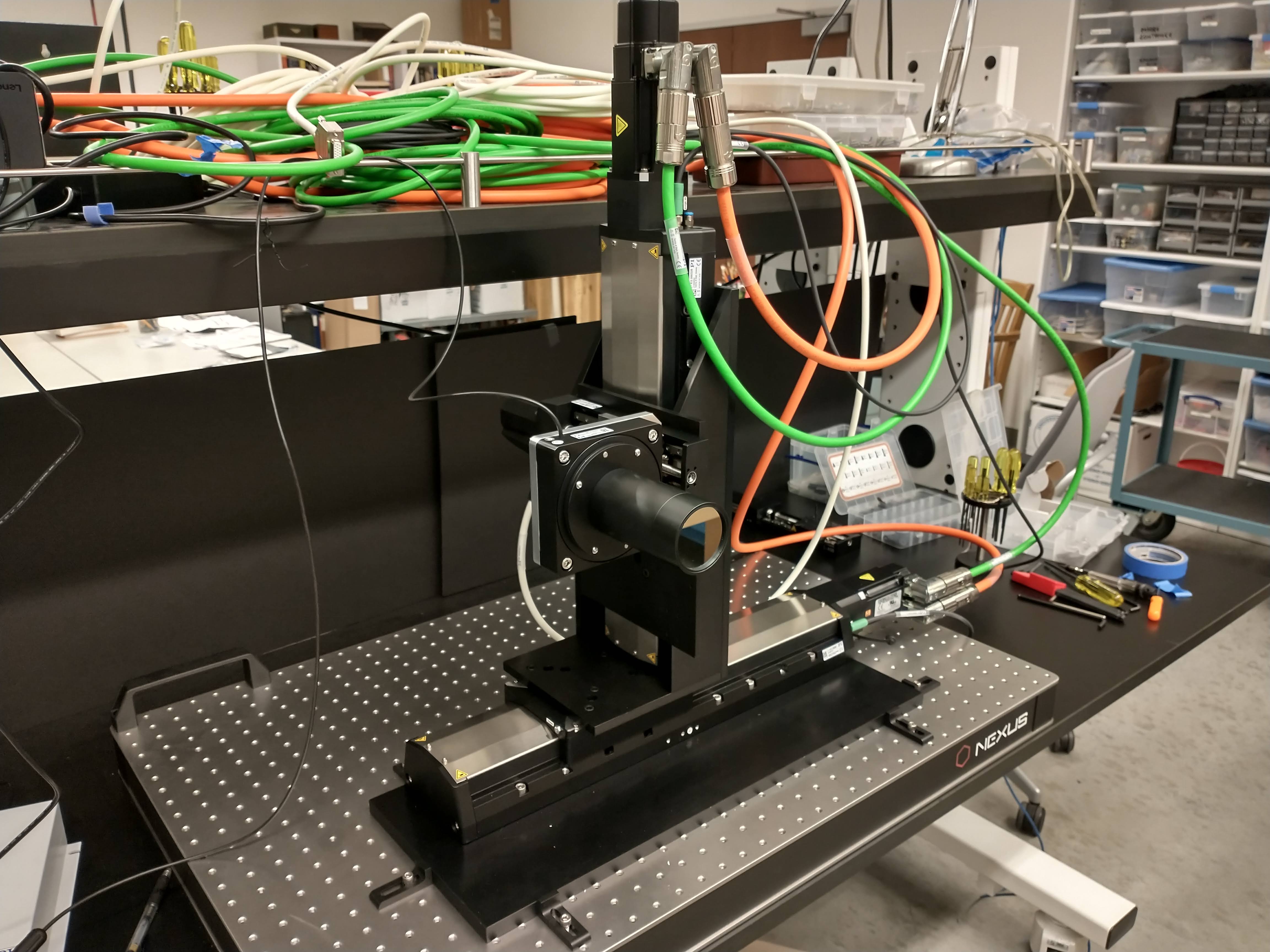...
The standard method is to take a bunch of images of stars, and compare their locations in the images to their true locations in the sky (perhaps from an astronomical catalogue). The downside of this is that it takes up valuable night time nighttime hours, need lots of bright stars, and relies on the external catalogue being accurate.
Enter the Precision Calbration Unit (PCU). The PCU features a pinhole mask, with a grid of tiny pinholes at a regular The PCU (pictured below being constructed in the lab) has been attached to the adaptive optics bench of the Keck I telescope. Its purpose is to do distortion calibrations0.5 mm spacing. By placing this mask into the optical path of the telescope and illuminating it from the back, we get a grid of artificial stars to look at. We can then do distortion measurements with these stars: take an image of them and see how they appear to deviate from a regular grid.
Doing distortion calibrations in this way has lots of advantages. We know the exact positions of the ‘stars’ in the grid, we can use a nice bright back light, and we can do it during the day, without using up nightime hours.

